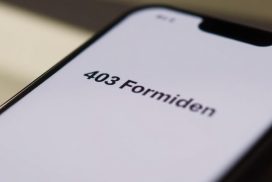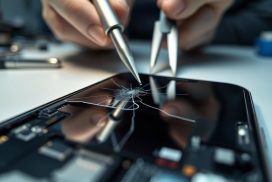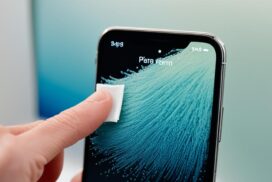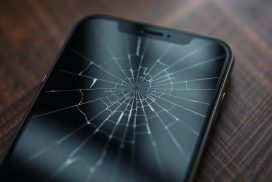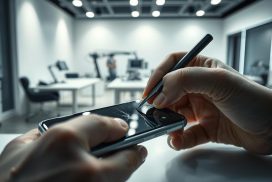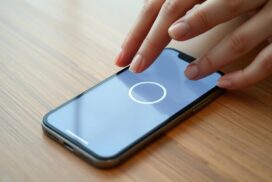iPhone Gyroscope and Accelerometer Calibration Fixes
Are you experiencing calibration issues with your iPhone’s gyroscope and accelerometer? Don’t worry, we’ve got you covered. In this article, we will provide you with effective calibration fixes that can help resolve these problems and restore the optimal performance of your iPhone.
Calibrating your iPhone’s gyroscope and accelerometer is essential to ensure accurate readings and smooth functionality. Whether you’re using an iPhone running on iOS 11 or later, these calibration fixes will work for you.
By following these simple steps, you can calibrate the brightness, motion sensors and compass, as well as the battery of your iPhone. These calibrations will help improve the accuracy of your gyroscope and accelerometer, providing you with a seamless user experience.
So, let’s dive into the details of each calibration fix and get your iPhone back on track.
Calibrating Brightness
Calibrating the brightness of your iPhone can enhance your viewing experience and save battery life. One way to achieve this is by calibrating the Auto-Brightness sensor. Follow the steps below:
- Turn off the Auto Brightness feature by going to Settings > Display & Brightness and toggling off Auto-Brightness.
- Find a dark room or dimly lit environment.
- Manually adjust the brightness of your iPhone to the lowest level using the slider in the Control Centre or Settings.
- Now, turn on the Auto-Brightness feature by going to Settings > Display & Brightness and toggling on Auto-Brightness.
- Observe if the automatic brightness adjustment works better in a room with regular lighting conditions.
By calibrating the brightness, you can ensure that your iPhone’s display is appropriately adjusted to various lighting conditions, providing optimal visibility without unnecessary strain on your eyes.
In addition to adjusting the brightness, it’s important to note that certain iPhone models may have different settings or features related to brightness calibration. For a comprehensive understanding of how to calibrate brightness on your specific iPhone model, refer to the official Apple support documentation or consult the user manual provided by Apple.
Stay tuned for the next section, where we’ll explore calibrating the motion sensors and compass on your iPhone.
| Brightness Calibration | Benefits |
|---|---|
| Improved viewing experience | Enhanced visibility in different lighting conditions |
| Extended battery life | Optimized power usage |
| Eyestrain prevention | Reduced eye fatigue during prolonged usage |
Note: The table above illustrates the benefits of calibrating the brightness on your iPhone.
Calibrating Motion Sensors and Compass
To ensure accurate functioning of the gyroscope, GPS, compass, and accelerometer on your iPhone, it is important to calibrate the motion sensors and compass. Follow these steps to achieve optimal performance:
- Open the Settings app on your iPhone.
- Scroll down and tap on “Privacy”.
- Tap on “Location Services”.
- Toggle on the “Compass Calibration” and “Motion Calibration & Distance” features.
- These features utilize location data to enhance the accuracy of the motion sensors and compass.
In older versions of iOS, there was an additional method to recalibrate the compass by playing the mini-game in the Compass app. However, this feature may no longer be available in the latest iOS versions.
By calibrating the motion sensors and compass, you can ensure that your iPhone provides precise readings and accurate navigation.
| Benefits of Calibrating Motion Sensors and Compass | Improved Accuracy | Enhanced Navigation |
|---|---|---|
| Calibrating the motion sensors and compass on your iPhone enables better accuracy in measuring motion and orientation. | With accurate motion sensor readings, you can enjoy more precise fitness tracking and augmented reality experiences on your device. | By ensuring the compass is properly calibrated, you can trust your iPhone to provide accurate navigation directions and orientation information. |
| Calibrating the motion sensors and compass on your iPhone enhances the overall user experience and enables seamless usage of various applications. | Whether you’re using GPS navigation apps, fitness tracking apps, or AR games, accurate motion sensor and compass readings are essential for optimal performance. | By calibrating the compass, you can avoid misdirection and confidently rely on your iPhone for accurate navigation in unfamiliar locations. |
Calibrating the Battery
If the iPhone battery percentage is inaccurate, it may be necessary to calibrate the battery. This can be done by fully discharging the phone, leaving it discharged and unplugged overnight to drain the battery completely, and then charging it for a couple of hours longer than necessary to reach 100% capacity. After rebooting the phone and performing a soft reset, the battery should provide a more accurate indication of its remaining power.
Here is a step-by-step guide to calibrating the battery on your iPhone:
- Use your iPhone until the battery drains completely and the phone shuts down automatically.
- Leave the phone disconnected and turned off overnight to allow the battery to fully discharge.
- After at least eight hours, connect the iPhone to a charger and leave it to charge for a few hours longer than necessary to reach 100% capacity.
- Once fully charged, reboot the phone by holding down the power button and swiping the “slide to power off” option.
- After the phone restarts, perform a soft reset by holding down the power button and the volume down button until the Apple logo appears.
It’s important to note that calibration may not always be necessary, and it is recommended to calibrate the battery only if you are experiencing significant inaccuracies with the battery percentage. Additionally, calibrating the battery does not increase its overall lifespan or capacity but ensures that the percentage displayed is more accurate.
By following these steps, you can improve the accuracy of your iPhone’s battery percentage and have a more reliable indication of its remaining power.
Compass Calibration in Google Maps
Google Maps offers a valuable feature called “compass calibration” that allows users to enhance the accuracy of compass readings within the app. By following a simple procedure of moving your iPhone in a figure-eight motion, you can calibrate the compass and improve its performance.
Implementing similar calibration features in your own iOS apps can significantly contribute to better compass accuracy and enhance user experience. By utilizing the Core Location framework and location services, you can access the device’s compass, accelerometer, and gyroscope to improve compass accuracy and provide more accurate directional information to your app users.
In addition to implementing calibration features, indicating when the compass is calibrated within your app’s interface can further enhance accuracy and provide users with confidence in the reliability of the compass data.
“Calibrating the compass in Google Maps is a simple yet effective way to improve compass accuracy in the app.”
As an iOS developer, it is crucial to prioritize compass accuracy in your apps. By integrating compass calibration features and utilizing the device’s motion sensors, you can ensure that users have access to reliable and precise compass data for navigation and orientation purposes.
Improving Compass Accuracy in Apps
When developing apps that rely on compass functionality, consider the following strategies to enhance compass accuracy:
- Implement calibration prompts: Guide users through the compass calibration process by providing clear instructions and visual cues within your app. This will help users understand the importance of calibration and how it can improve compass accuracy.
- Utilize motion sensors: The gyroscope and accelerometer play crucial roles in compass accuracy. Utilize data from these sensors to provide real-time adjustments and compensation for any device tilting or movement, ensuring accurate and reliable compass readings.
- Indicate calibrated status: Inform users when the compass has been successfully calibrated and is ready for accurate readings. This can be achieved by displaying a visual indicator or a message within the app’s interface.
By implementing these strategies, app developers can greatly improve compass accuracy and provide users with a seamless and reliable navigation experience.
https://www.youtube.com/watch?v=rFSb7VFKYBQ
Implementing compass calibration features in your iOS apps can significantly enhance compass accuracy and ensure accurate navigation for users. By utilizing the device’s motion sensors and providing calibration prompts, you can improve the reliability of compass readings and enhance the overall user experience.
Hardware and Software Issues with Gyroscope Calibration on iPhone 5s
Some users have reported gyroscope calibration issues with the iPhone 5s. These issues may be caused by hardware or software factors. There have been reports of a four-degree difference in gyroscope readings compared to an accurate digital level.
Some users have attempted software fixes, such as updating to the latest iOS version and charging the battery with the screen locked and ‘Do Not Disturb’ enabled. However, for certain users, these solutions have not resolved the gyroscope calibration issue.
Gyroscope calibration is crucial for accurate motion tracking and augmented reality experiences on the iPhone 5s. Inaccurate gyroscope readings can lead to incorrect orientation and navigation in apps and games that rely on gyroscope data. The hardware and software issues with gyroscope calibration on the iPhone 5s pose a significant inconvenience for users who heavily rely on these capabilities.
Hardware vs Software Issues
The gyroscope calibration issues on the iPhone 5s can be attributed to both hardware and software factors. Some users speculate that the gyroscope hardware itself may be faulty, leading to inaccurate readings. However, others believe that the issue lies within the software, with certain iOS versions failing to properly calibrate the gyroscope.
“The gyroscope on my iPhone 5s consistently shows a four-degree difference when compared to a reliable digital level. I’ve tried all the software fixes suggested online, but nothing seems to resolve the calibration issue.”
This quote from a frustrated iPhone 5s user highlights the ongoing struggle faced by many encountering gyroscope calibration problems. Whether the root cause lies in the hardware or software, the impact on user experience remains significant and demands attention from Apple.
Apple is aware of these gyroscope calibration issues, and it’s expected that future software updates will address these problems. However, until then, affected iPhone 5s users may have to consider alternative solutions or contact Apple Support for further assistance.
The image above illustrates the frustration of iPhone 5s users dealing with gyroscope calibration issues. Through a combination of hardware and software improvements, Apple aims to resolve these problems and provide an optimal user experience for all iPhone 5s users.
Future Updates for Gyroscope and Compass Issues
Apple has acknowledged the gyroscope and compass issues on the iPhone 5s and is actively working on a system-wide software update to address these problems. It has been reported that the issue arose due to a component switch that caused false interpretation of sensor data in iOS 7.
Users have been advised to back up their device, erase/reset it, and restore from the backup in an attempt to troubleshoot the gyroscope and compass issues. However, for some users, these steps have not resolved the problem, leading Apple to replace their devices in certain cases.
The hope is that the forthcoming software update will provide a comprehensive fix for the gyroscope and compass issues, ensuring accurate sensor data and optimal user experience on the iPhone 5s.
Comparison of Gyroscope and Compass Issues
| Issue | Resolution Attempts | Effectiveness |
|---|---|---|
| Gyroscope and Compass Issues | Back up, erase/reset, restore from the backup | Partial success for some users, device replacement for others |
| Planned Software Update | N/A (upcoming) | Hopeful for a comprehensive fix |
Note: The effectiveness of resolution attempts may vary for different users based on unique device configurations and other factors.
Conclusion
Calibration fixes for iPhone gyroscope and accelerometer issues can significantly enhance the performance and accuracy of these sensors. By implementing the recommended calibration procedures, such as adjusting the brightness, enabling compass and motion sensor calibration, and calibrating the battery, users can ensure optimal functionality of their iPhones.
Although there have been reports of gyroscope issues specifically on the iPhone 5s, Apple is actively working on a software update to address these problems. By incorporating calibration features in their apps and providing accurate handling instructions, developers can further improve the accuracy of the gyroscope and compass.
With these calibration fixes and future software updates, iPhone users can expect seamless and precise usage of the gyroscope and accelerometer on their devices. These improvements not only enhance user experience but also contribute to the overall functionality and reliability of iPhones.
FAQ
How can I calibrate the brightness of my iPhone?
To calibrate the brightness of your iPhone, you can turn off the Auto Brightness feature, move to a dark room, and manually adjust the brightness to the lowest level. Then, turn on the Auto Brightness feature and check if the automatic adjustment works better in a room with regular lighting.
How do I calibrate the motion sensors and compass on my iPhone?
To calibrate the motion sensors and compass on your iPhone, make sure that the Compass Calibration and Motion Calibration & Distance features are toggled on in the settings. These features use location data to ensure accurate functioning of the gyroscope, GPS, compass, and accelerometer. In older versions of iOS, you can also recalibrate the compass by playing the mini-game in the Compass app.
My iPhone battery percentage is inaccurate. How can I calibrate the battery?
If the iPhone battery percentage is inaccurate, you can calibrate the battery by fully discharging the phone, leaving it discharged and unplugged overnight to drain the battery completely, and then charging it for a couple of hours longer than necessary to reach 100% capacity. After rebooting the phone and performing a soft reset, the battery should provide a more accurate indication of its remaining power.
How can I improve compass accuracy in Google Maps?
Google Maps has a feature called “compass calibration” that prompts you to move your device in a figure-eight motion to calibrate the compass. This can help improve the accuracy of compass readings in the app. As an iOS developer, you can implement similar calibration features in your own apps to contribute to better compass accuracy using the Core Location framework and location services.
Are there any known gyroscope calibration issues with the iPhone 5s?
Yes, some users have reported gyroscope calibration issues with the iPhone 5s. These issues may be caused by hardware or software factors, and there have been reports of a four-degree difference in gyroscope readings compared to an accurate digital level.
What steps have Apple taken to address the gyroscope and compass issues on the iPhone 5s?
Apple has acknowledged the gyroscope and compass issues on the iPhone 5s and is working on a system-wide software update to address these problems. Users have been advised to back up their device, erase/reset it, and restore from the backup. Apple has also replaced devices for some users when these steps did not resolve the gyroscope and compass issues.
How can calibration fixes improve the performance and accuracy of iPhone gyroscopes and accelerometers?
Calibration fixes such as adjusting brightness, toggling on compass and motion sensor calibration, and calibrating the battery can greatly improve the performance and accuracy of iPhone gyroscopes and accelerometers. By following the recommended calibration procedures, users can ensure optimal functionality of their iPhones.
What can be expected in future updates to address gyroscope and compass issues?
Apple is actively working on a software update to address gyroscope and compass issues. This forthcoming update is expected to provide a comprehensive fix for these problems, ensuring seamless and precise usage of the gyroscope and accelerometer on iPhones.

